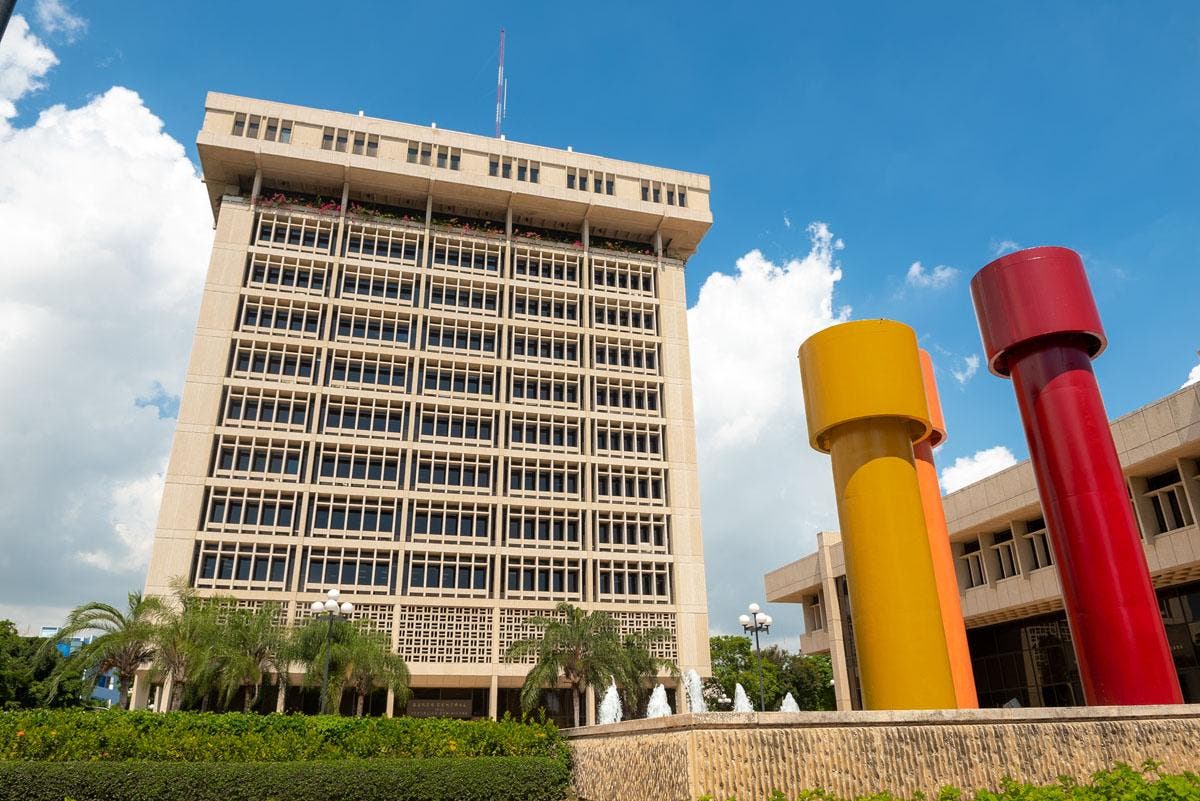The Central Bank of the Dominican Republic (BCRD) informs that the variation of the Index of Consumer Prices (IPC) was 0.67% in March 2022 with respect to the month of February 2022, showing a slowdown compared to the rates of 1.18% and 0.92% observed in the months of January and February of this year, respectively. In this sense, the accumulated inflation in the first quarter of 2022 was 2.80%.
In regards to the inflation underlying monthly, it registered a behavior of moderation similar to that of the general IPC, going from 0.65% in January and 0.60% in February, to 0.51% in March, standing in year-on-year terms at 6.99% at the end of March. This indicator isolates the behavior of certain foods with great variability in their prices, as well as fuels, services with regulated prices such as electricity rates, transportation, alcoholic beverages and tobacco, thus allowing clearer signals to be extracted for driving. of monetary policy.
external pressures
The BCRD points out that it is important to point out that the dynamics of domestic prices continue to reflect external inflationary pressures that are more persistent than expected, which have intensified with the Russia-Ukraine military conflict, causing additional increases in the prices of inputs and primary goods (commodities) for production, including oil, which has exceeded US$100 per barrel. Likewise, container shipping costs remain well above pre-pandemic levels and disruptions remain in international supply chains.
You may be interested in: What is economic inflation and how can it affect the DR?
international trend
The year-on-year inflation in the economies has similarly evidenced a notable rise in the current context. In this sense, said indicator for countries in the North American region such as the United States of America stood at 8.5% at the end of March, more than four times higher than the average goal of 2.0% of the Federal Reserve in the long term and the highest in the last 40 years. While that of Canada reached its maximum value in the last 30 years with 5.7% in February 2022. On the other hand, in the euro zone, annualized inflation registered a rate of 7.5% in March 2022, the highest in the history of that bloc of countries since the creation of the Euro as a common currency. In particular, economies such as Spain, Germany and the United Kingdom have shown an increase in inflation levels, reporting, according to the latest figures available, 9.8%, 7.3%, and 6.2% in year-on-year terms, respectively. It is important to point out that this scenario is aggravated by the economic uncertainty associated with the Russian invasion of Ukrainian territory, notably reflected through increases in the cost of energy, in addition to the persistent effects previously described.
In the case of most of the countries of Latin America, as of March 2022 exhibit inflation rates above the central levels of their target ranges (around 3.0% and 4.5%) in all those operating under this monetary policy scheme. Such are the cases of Peru with an inflation of 6.82% (3.4 times higher), Brazil 11.30% (3.2 times higher), Chile 9.41% (3.1 times higher), Colombia 8.53% (2.8 times higher), Paraguay 10.08% (2.5 times higher). times higher), Mexico 7.45% (2.5 times higher), Uruguay 9.38% (2.1 times higher), Costa Rica 5.79% (1.9 times higher) and Honduras 6.96% (1.7 times higher).
In the Dominican Republic, the year-on-year inflation, that is, for the last 12 months, from March 2021 to March 2022, it stood at 9.05%, 2.3 times higher than the 4.0% of the center of the target range. It is worth specifying that the interannual result includes the inflation of 2.80% of the first three months of the year 2022.
A relevant aspect is that the set of measures announced by the Presidency of the Republic, particularly the subsidy to fuels to avoid new increases due to the increase in the international price of oil, has begun to be reflected in a moderation of the inflation of the Transportation group, reducing its incidence in the variation of the general CPI, which is expected to continue consolidating in the coming months, while fuel prices remain unchanged.
In the case of monetary policy, the Central Bank of the Dominican Republic continues to implement the plan to normalize monetary conditions with the aim of mitigating the inflationary impact of external shocks on domestic prices and contribute to the convergence of inflation to the target range in the policy horizon, in an environment of stability in the foreign exchange market.
In particular, at the recent monetary policy meeting at the end of March 2022, the Central Bank decided to increase its reference interest rate (TPM) by 50 basis points, going from 5.00% to 5.50% per year, accumulating a variation of 250 basis points from November 2021 in the monetary policy rate. It should be noted that most of the world’s central banks have moved in this direction, in order to normalize monetary conditions and counteract inflationary pressures.
Groups with the highest incidence
The analysis of the behavior of the CPI shows that the groups with the highest incidence in inflation in the month of March 2022 were Food and Non-Alcoholic Beverages (1.18%), Transportation (0.67%), Miscellaneous Goods and Services (0.84%) and Restaurants and Hotels (0.96%), explaining as a whole approximately 86% of the variation of the index for the month. To a lesser extent, the variations in the price indices of the Furniture and Household Items (0.65%) and Housing (0.24%) groups contributed.
The group price index Food and Non-Alcoholic Beveragess, registering an increase of 1.18%, was the one with the highest incidence in the CPI for the month of March, mainly explained by increases in the prices of fresh chicken (3.13%), avocados (12.41%), green pigeon peas (12.34%) , pork (2.84%), peppers (4.69%), cassava (3.22%), soybean oil (1.28%), purified water (0.90%), evaporated milk (2.50%), green bananas (2.05%), beef (1.05%), liquid milk (1.17%), rice (0.31%), salami (0.71%), potatoes (2.47%) and white cheese (1.54%), while other food goods registered decreases in prices , such as eggs (-1.33%), onions (-2.52%) and garlic (-2.58%).
The variation of 0.67% in the Transportation index responds mainly to the increases experienced in the prices of Premium gasoline (2.02%) and regular (1.50%) and diesel (1.98%), which if the subsidy scheme had not been implemented, would have registered higher increases. Additionally, in the Transportation group, the price increases of vehicle repair services (1.48%) and land transportation in motoconcho (0.75%), in urban bus (0.70%), public car (0.39%), as well as tickets abroad (2.68%). These increases were partially offset by the reduction in car prices (-2.38%), meaning that the inflation of this group was not of a greater magnitude.
Tradable and non-tradable inflation
The variation of 0.72% of tradable goods, those that can be exported and imported free of restrictions, is explained by increases in fuel prices and some food goods such as avocados, green pigeon peas, pork, peppers, yucca, soybean oil, purified water, evaporated milk, green bananas, beef, salami, potatoes and white cheese.
The index of non-tradable goods and services, those that by their nature can only be marketed within the economy that produces them or are subject to measures that limit their imports, varied 0.61% in March 2022, mainly due to the recorded price increases in food services prepared outside the home, such as dish of the day, chicken service and grocery service with garnish, housing rental and maintenance, personal care services such as men’s haircuts, hair washing and styling, vehicle insurance, ground transportation services, vehicle repair and in some foods such as fresh chicken, rice, liquid and powdered milk.
Inflation by geographic region
The results of the CPI by geographical areas show that the price index of the Ozama region, which includes the National District and the Santo Domingo province, varied 0.60%, in the North or Cibao region 0.72%, East zone 0.69% and the South region 0.75%.
The higher variation of the CPI in the North and South regions is mainly explained by the higher incidence of the CPI of the Food and Non-Alcoholic Beverages and Transportation groups in both geographical areas.
Inflation by quintiles
Finally, the analysis of the price indices by socioeconomic strata shows that the lowest income quintiles registered variations of 0.83% in quintile 1, 0.81% in quintile 2 and 0.75% in quintile 3, mainly explained by increases in food prices. , fuels, ground transportation services, personal care services and meals prepared outside the home. As for the quintiles with the highest income (4 and 5), they registered inflation rates of 0.58% and 0.56% respectively, largely due to the rise in prices of food, fuel, airfare and vehicle insurance. These results are consistent with inflation for the month of March of 0.67%.

















